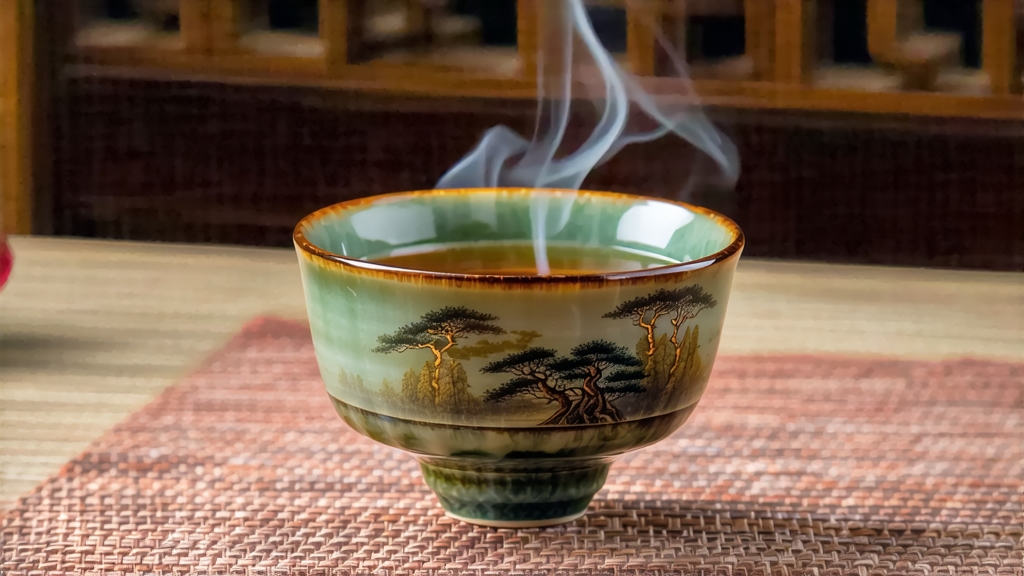
If green tea is the fresh-faced youth of Chinese tea and pu-erh the venerable sage, then Phoenix Dancong (Fenghuang Dancong) is the perfumed poet—flamboyant, elusive, and endlessly articulate. Nestled in the mist-veiled Phoenix Mountains of Guangdong Province, this oolong sub-category has seduced tea traders since the Song dynasty, lured emperors with its natural fragrance of orchid or peach, and still refuses to be tamed by modern plantations. To understand Dancong is to listen to a single tree telling the story of a mountain, a climate, and a culture that turns leaves into music.
History: from tribute to terroir
Local chronicles credit the She ethnic minority with first cultivating wild Camellia sinensis var. sinensis on the granite slopes of Fenghuang Shan around 900 years ago. By the late Ming, court records list “Fenghuang Shuixian” as tribute tea; the Qing Kangxi Emperor reportedly praised its “mountain soul lingering on the tongue.” The term Dancong—literally “single bush”—appeared in Republican-era export documents when tea merchants began separating individual old trees to preserve their distinctive aromatics. Today, more than eighty genetically distinct fragrance types are recognized, each tied to a mother tree aged 100–700 years. The Chinese government has designated 3,500 hectares of core Phoenix Mountain as a protected origin zone, ensuring that only leaf picked within 1,200–1,400 m elevation can bear the prestigious “Phoenix Dancong” mark.
Micro-ecology: why the mountain smells like honey
The Phoenix range rises abruptly from the subtropical Guangdong plain, intercepting monsoon clouds that shed 2,100 mm of rain annually. Temperature swings of 8–10 °C between day and night slow leaf growth, concentrating aromatic precursors. Granitic soils, rich in potassium and eroded quartz, force roots to dive three meters deep, absorbing minerals that translate into a stony finish in the cup. Most importantly, the mountain’s south-facing amphitheaters trap morning fog, diffusing sunlight into a soft, amber glow that promotes monoterpene synthesis—the very molecules responsible for Dancong’s signature floral bouquet.
Cultivars and fragrance taxonomy
Unlike Tieguanyin, where one clone dominates, Dancong is a living library of flavors. Farmers classify each ancient bush by its natural scent memory, using the “xiang” (fragrance) system. Classics include:
- Huangzhi Xiang (gardenia) – creamy, with a lactone heart note reminiscent of pandan leaf.
- Milan Xiang (honey-orchid) – the benchmark style, balancing linalool sweetness with a snap of green almond.
- Zhilan Xiang (orchid-lily) – softer, with a watery, almost aquatic finish.
- Xingren Xiang (almond) – marzipan on the nose, carried by a roasted, nutty body.
- Ya Shi Xiang (duck-shit aroma) – the deliberately provocative name hides a cultivar that tastes of jasmine, ripe mango, and mineral salts; the moniker was coined to scare tea thieves.
Each mother tree is vegetatively propagated through air-layering (daicao) to preserve its genotype, yet even cloned bushes develop micro-differences depending on altitude, solar aspect, and neighboring flora—a phenomenon locals call “shan chang” (mountain temperament).
Craft: the dance of sun, bruise, and charcoal
Phoenix Dancong’s processing is a 24-hour relay of precision and intuition. Picking begins at dawn when two leaves and a bud still hold dew; any later and the sun wilts the fragile aromatics. The leaves are sun-withered for 20–40 minutes on bamboo screens, turned every five minutes to ensure even water loss. Indoor “cooling” follows—an air-conditioned rest that lowers leaf temperature to 22 °C, priming enzymes for the critical bruising stage.
Bruising (yaoqing) is performed in waist-high bamboo drums rotating at 18 rpm for 3–5 minutes, repeated six times with 45-minute pauses. Each tumble breaks cell walls just enough to coax oxidation without rupturing the leaf surface; masters listen for a rustle that sounds like “rain on silk.” Oxidation proceeds to 30–40 %—midway between green and black—monitored by the color shift from emerald to tiger-eye amber.
Firing halts oxidation in 280